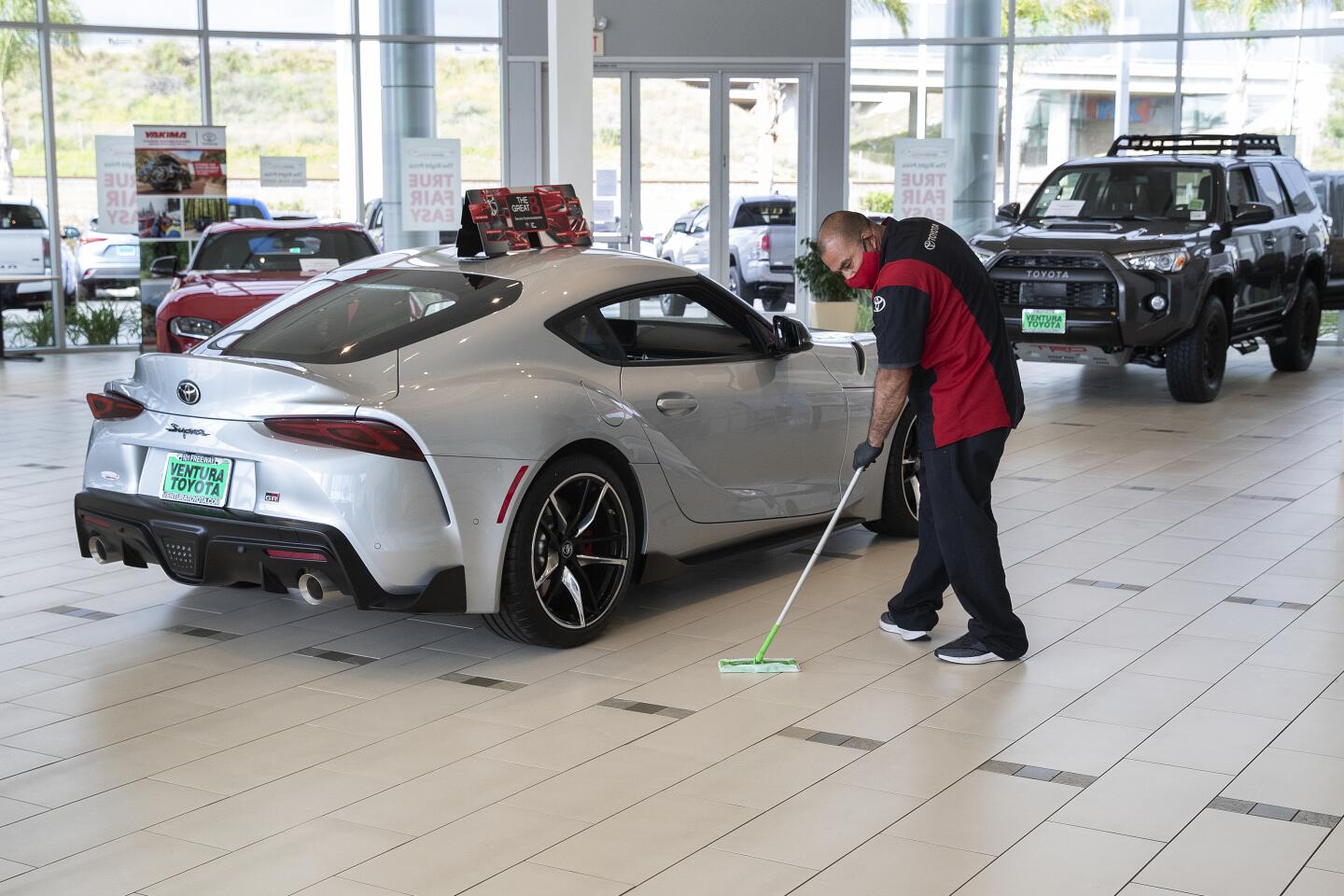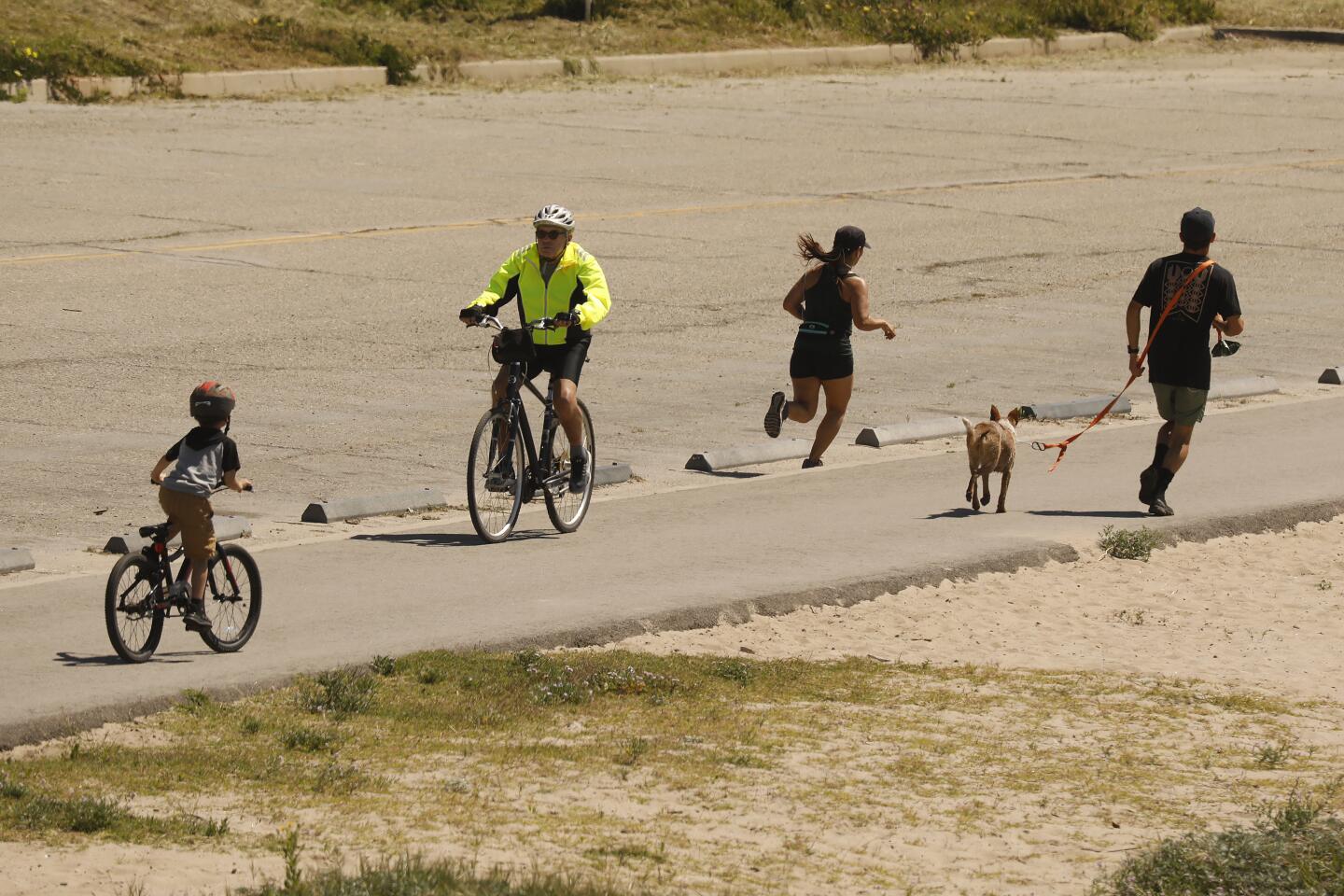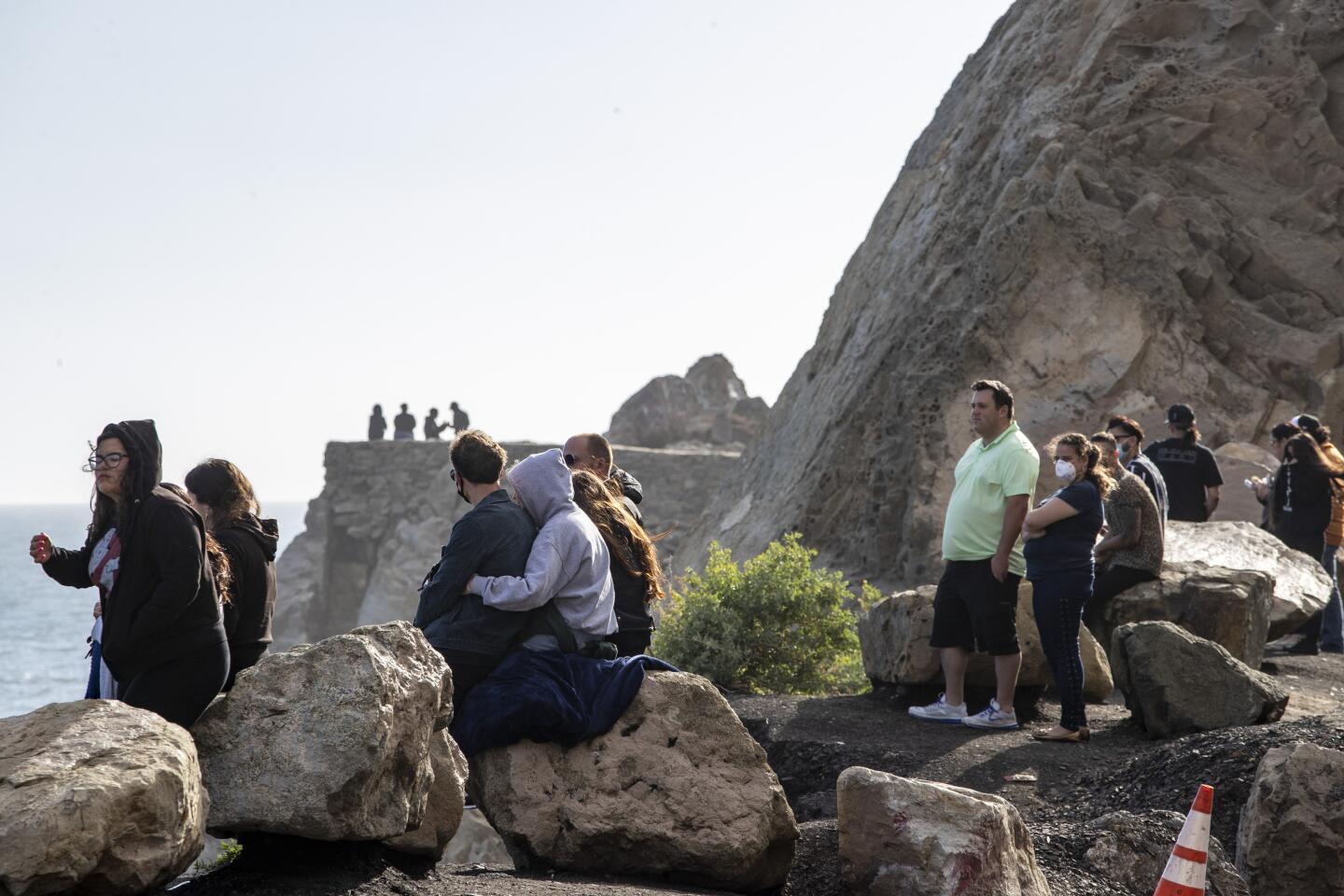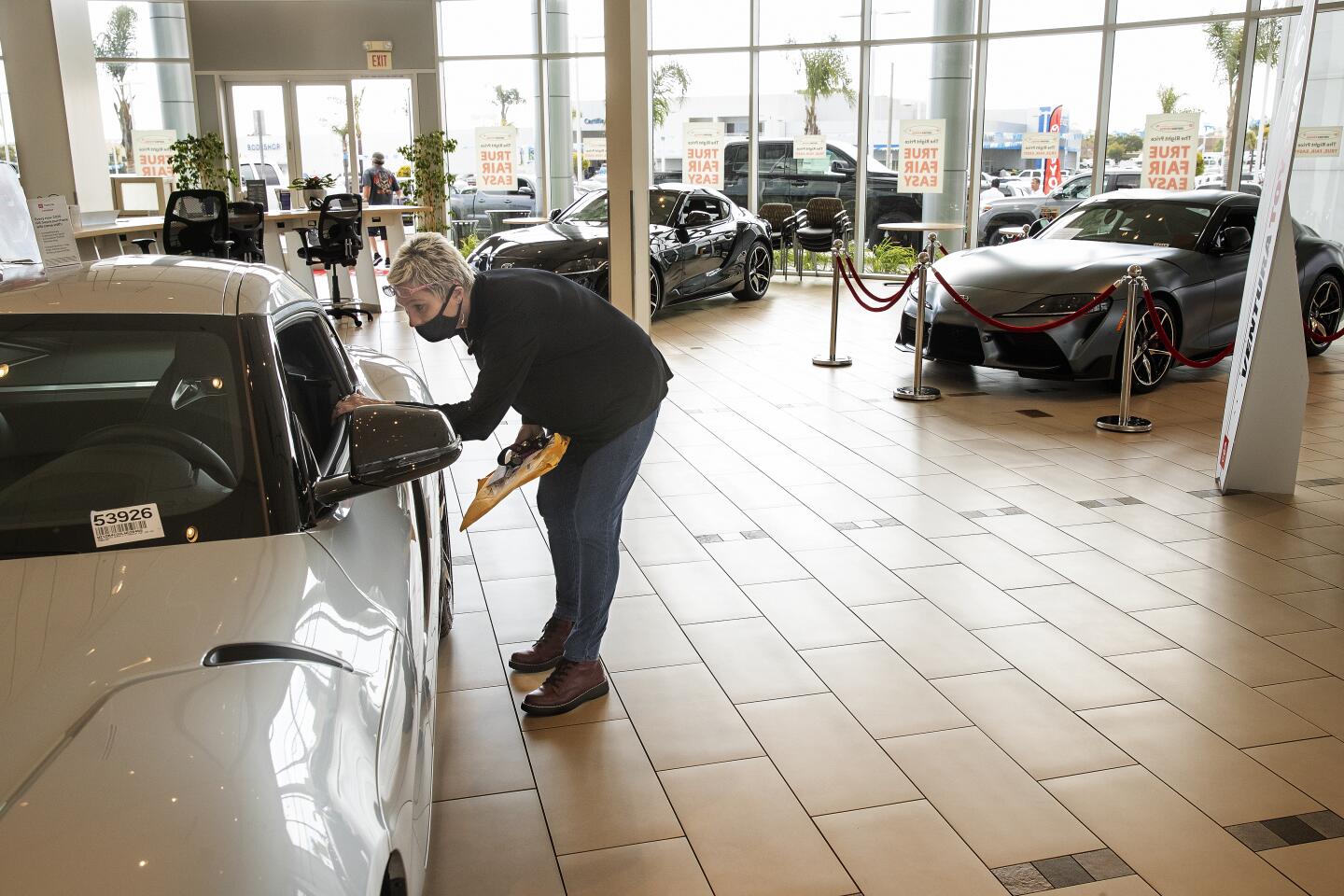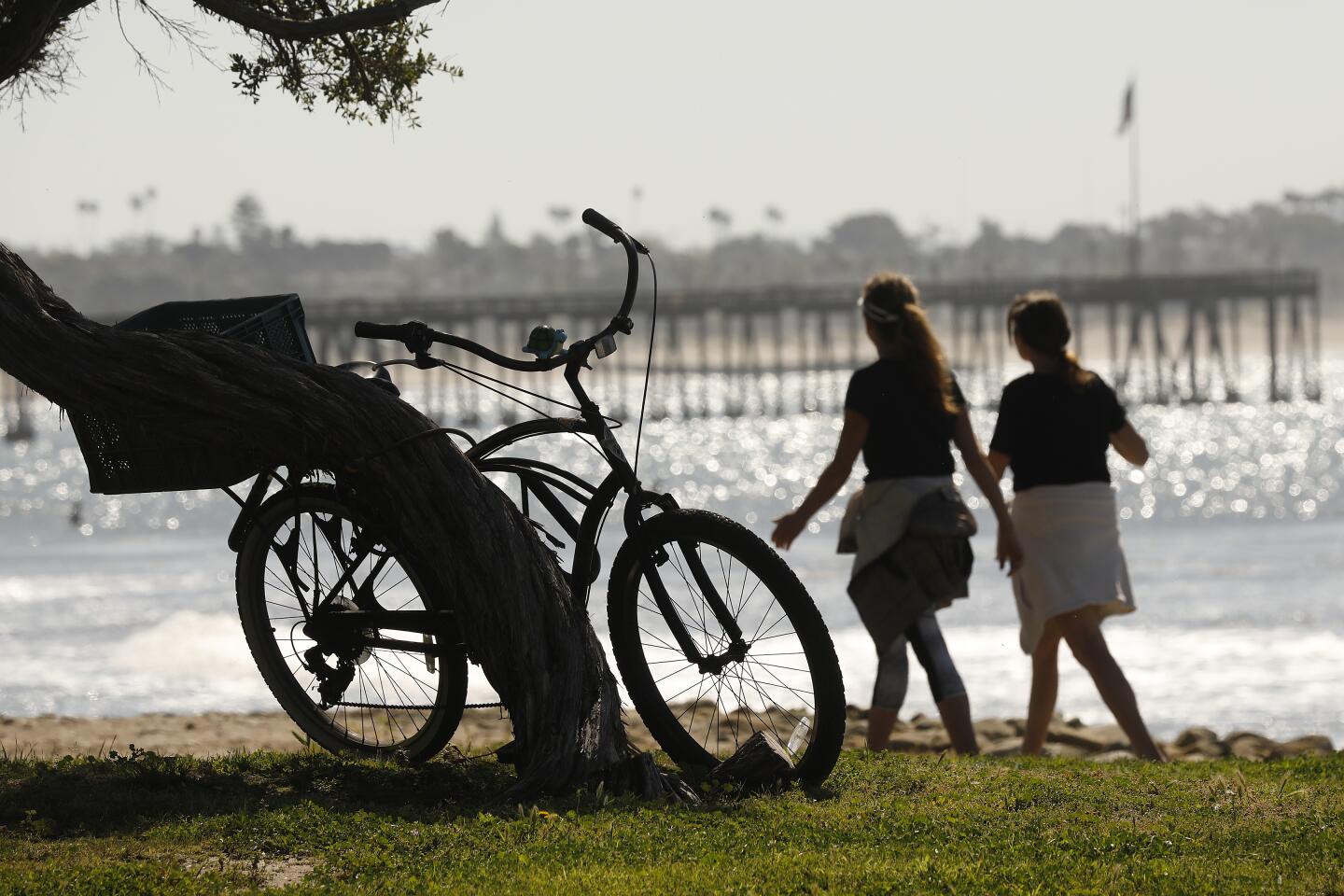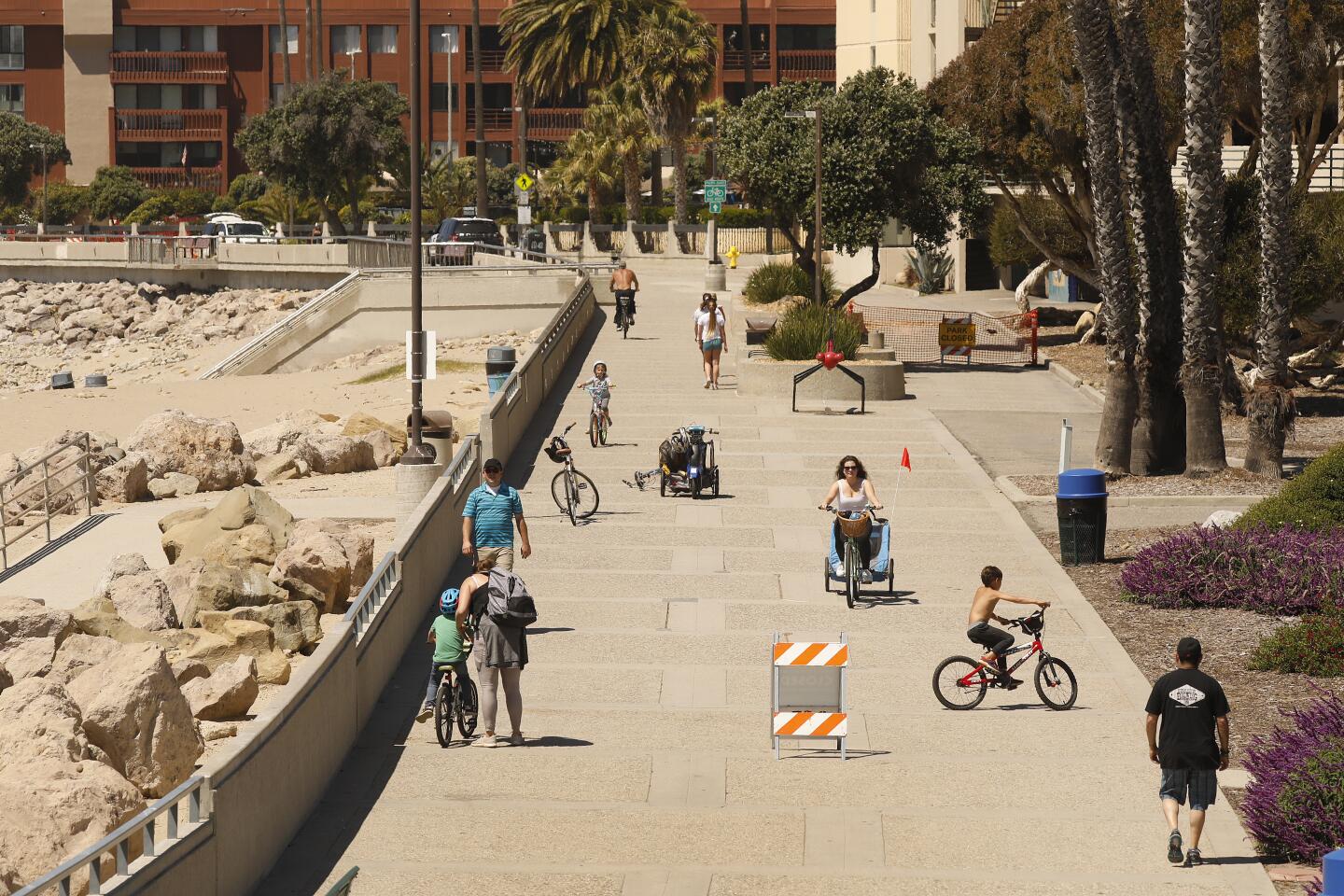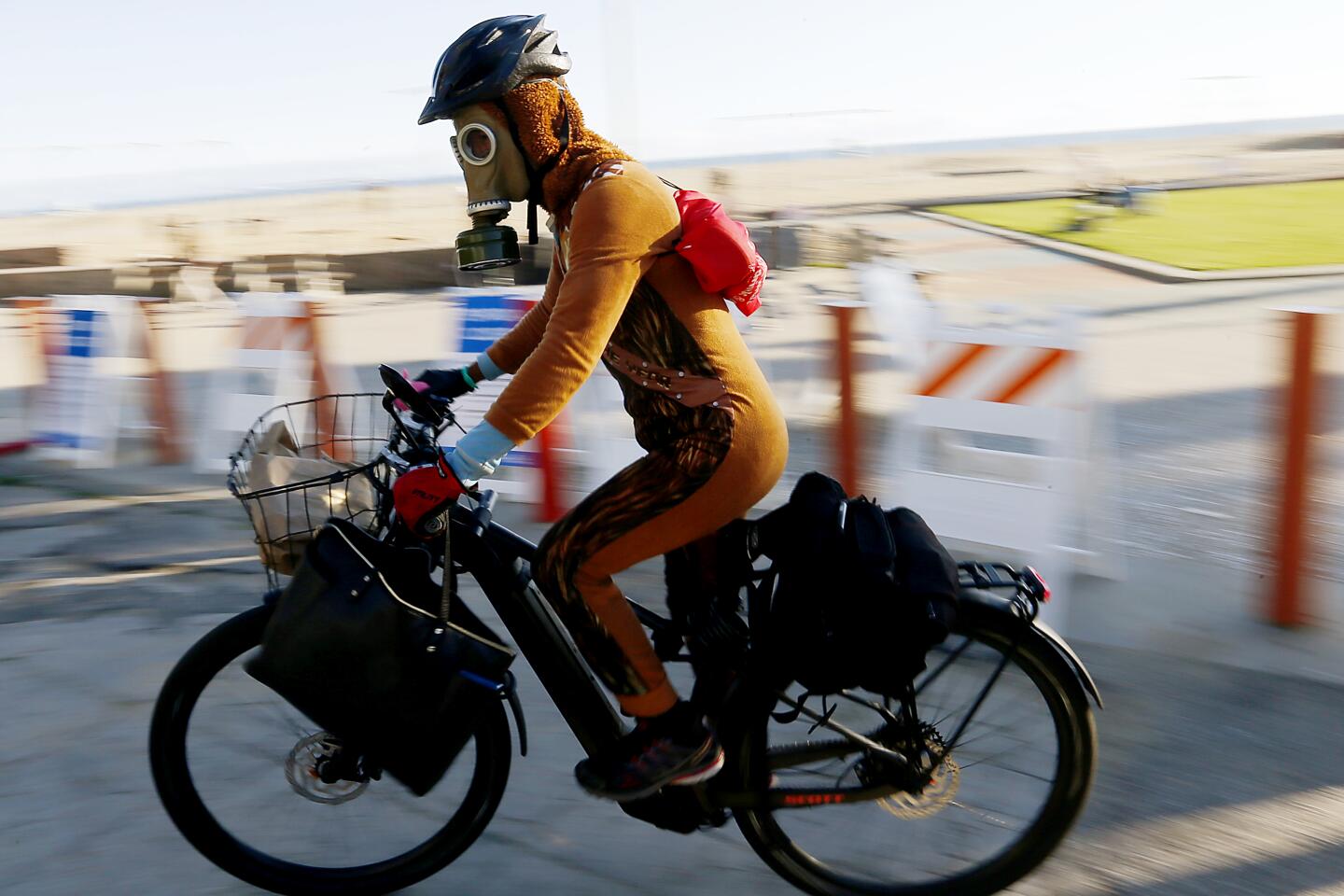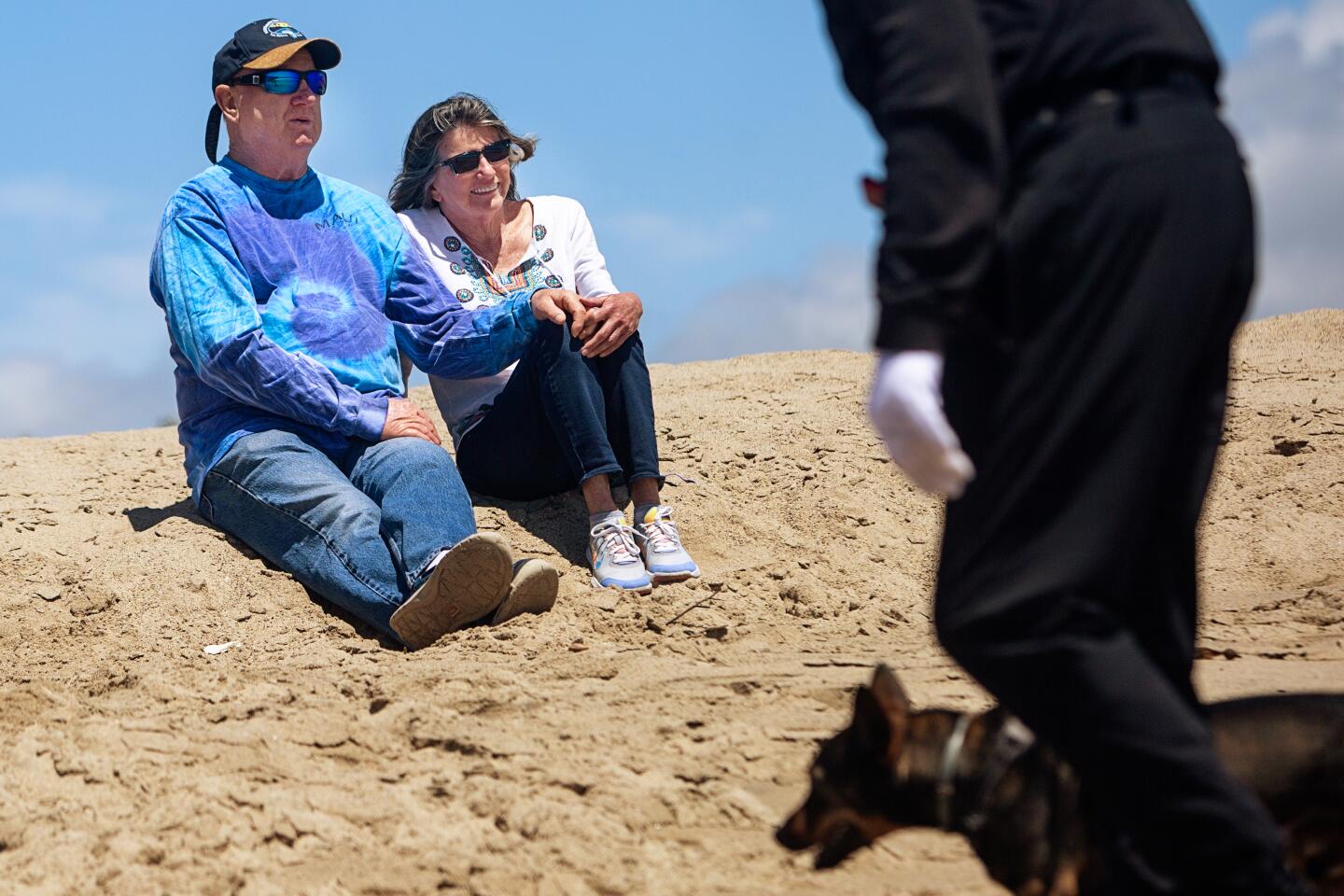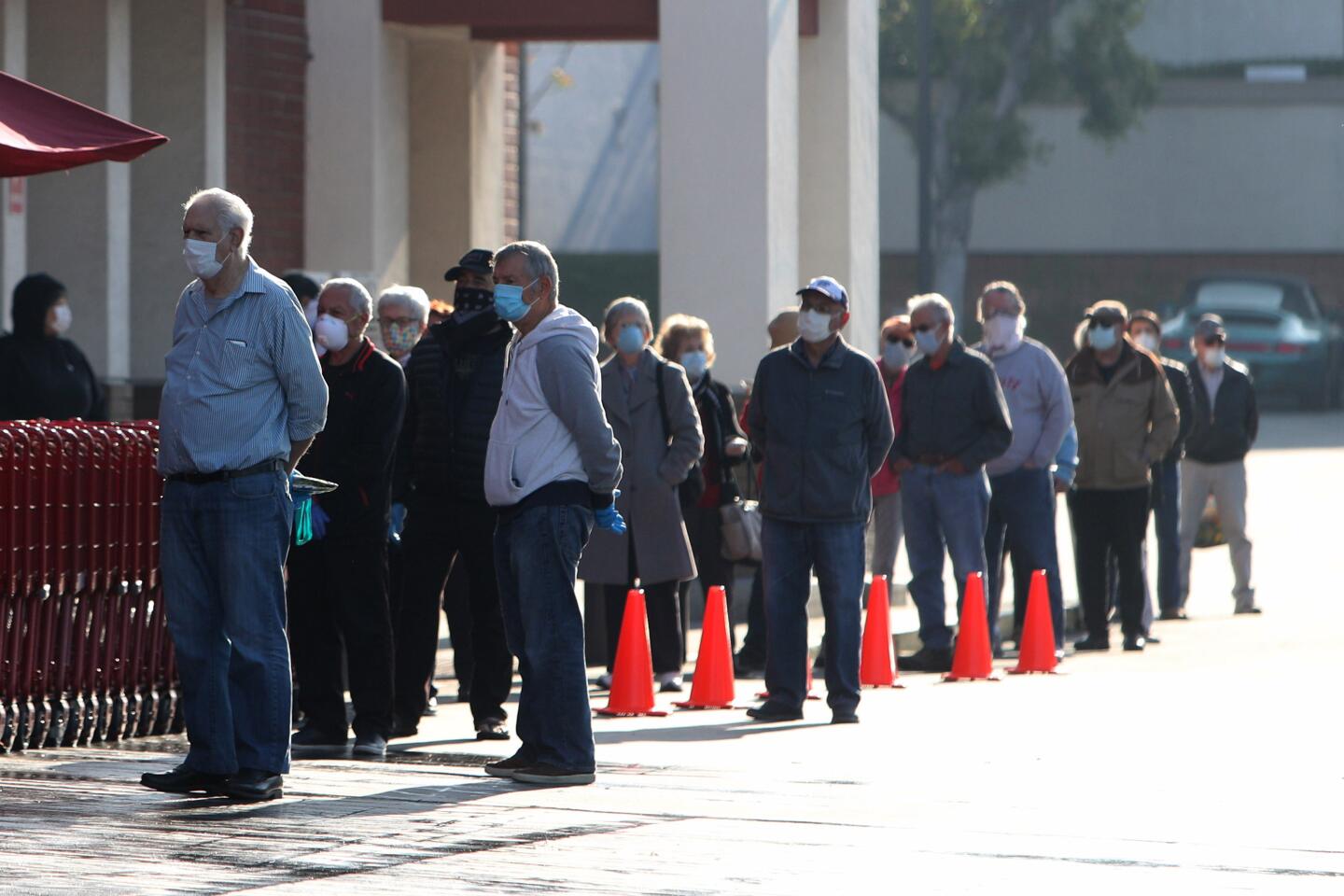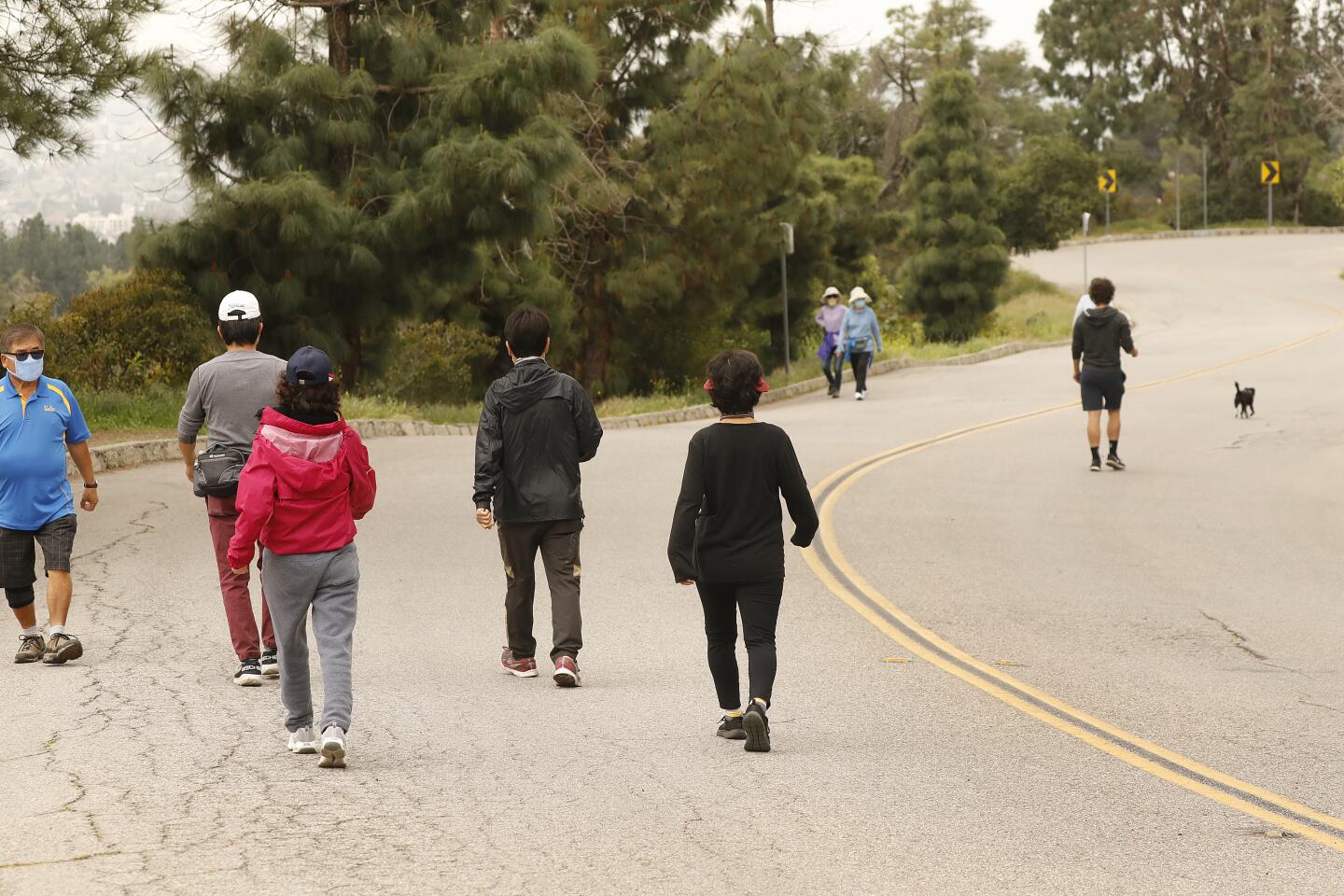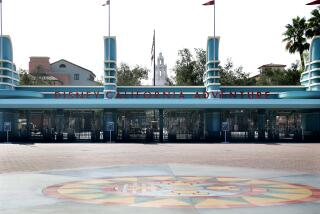Some sections of California are pushing to lift stay-at-home rules before others
- Share via
SAN FRANCISCO — Leaders in the central California county of San Luis Obispo are confident they have flattened the coronavirus curve. The coastal county of 283,000 people recorded 134 cases and one death, and this week, there were only two confirmed infected people in hospital beds.
Yet a large share of its economy — the once-bustling shopping district of downtown San Luis Obispo, the famed wine tasting rooms around Paso Robles, the coastal tourist meccas of Morro Bay and Pismo Beach — remained closed tight.
So officials this week are making a bid with Gov. Gavin Newsom to begin a slow and gradual reopening process, one they say is guided by science but also recognition that San Luis Obispo County might be in better shape to ease stay-at-home rules faster than more populous hotspots like Los Angeles County and Silicon Valley.
“This is not like flicking on a light switch, it’s more like operating a dimmer,” San Luis Obispo County Supervisor Bruce Gibson said Tuesday. “We’re going to bring it up and see if it works, and we do have mechanisms to go back to a certain level of restriction.”
They have joined a small group of other local officials in California to ask Newsom to consider changes in his sweeping statewide restrictions on movements based on local conditions. While the coronavirus has hit almost all parts of California, some areas have seen significantly more confirmed cases, hospitalizations and deaths than others.
“This bipartisan group of local elected leaders asks that you allow our county to exercise local authority to implement a phased reopening of our local economy over the next three weeks,” said a letter signed by seven mayors, two county supervisors and a state assemblyman. Sutter County officials sent a similar request to the governor.
San Luis Obispo County has a large supply of personal protective equipment and testing capacity, they added, and has built a site that can quickly scale up to take in more than 900 ill patients.
“We have been successful in our efforts to manage the virus’ spread, and we have put in the work and made investments to prepare for any type of surge or second wave,” the letter said.
Some top local officials, including San Francisco Mayor London Breed and Los Angeles Mayor Eric Garcetti, have urged patience, expressing concern that lifting the order too soon could cause more outbreaks and hurt the economy more in the long run.
L.A. County over the last week has recorded a sharp rise in deaths, with 297 new deaths over the past seven days compared with 193 fatalities reported over the previous seven-day period. The L.A. County death toll now stands at 663 as of Tuesday night. And a new study by USC and L.A. County scientists suggests hundreds of thousands of people in L.A. County might have coronavirus.
“I know many of you are feeling frustrated or wondering when we’ll be able to lift the safer at home order. But lifting the restrictions too soon could risk lives,” Garcetti said Monday.
Newsom has expressed doubts about relaxing orders piecemeal in various jurisdictions, and some health experts also have concerns. For example, if San Luis Obispo County reopened some of its businesses, what would stop residents from Southern California and the Bay Area from driving three or four hours there to spend a weekend at Pismo Beach and potentially cause new outbreaks?
“The problem with counties coming up piecemeal is about whether they create magnets,” said Dr. George Rutherford, a UC San Francisco epidemiologist and infectious diseases expert.
There are situations in which a tailored, nuanced approach may be appropriate by region, said Dr. Robert Kim-Farley, medical epidemiologist and infectious diseases expert at the UCLA Fielding School of Public Health.
First, counties would need to show there’s adequate testing available, and there’s plenty of hospital capacity. And cases, hospitalizations and deaths would need to be declining consistently before loosening the rules can begin.
“So if they start to take away some of these physical distancing measures, they have some room, if you will, to start a little bit of [coronavirus] growth upwards without overloading their system,” Kim-Farley said.
Kim-Farley said he could envision ways of keeping physical distancing in place while allowing more businesses to open, like requiring sporting goods stores to follow the same rules essential businesses now follow in some counties — require people to wear face coverings and limit the number of people inside.
The same concept might apply to beaches and parks — allowing people to go for a walk or a swim, but barring gatherings of large groups, Kim-Farley said.
Newsom suggested on Tuesday that he would not allow local officials to take any action that would loosen the statewide restrictions that he put in place on March 19.
“I imagine there’ll be some examples of people just getting ahead of that collaborative spirit,” said the governor. “And we may have to dial a little bit of that back.”
The governor said his advisers were seeking to better organize various conversations with county and city leaders over relaxing the restrictions.He said he’d provide an update on Wednesday on how current conditions in California compared to the requirements in his six-point blueprint.
In particular, Newsom promised an in-depth look at the challenges related to testing for the coronavirus and tracing potential cases of COVID-19 in communities across the state. He said the state was now averaging about 14,500 tests a day, fewer than his target of 25,000 a day by the end of April.
He cited administration statistics from the most recent 24-hour period — which showed a 3.3% increase in hospitalizations and a 3.8% increase in patients being treated in intensive care wards — as evidence that a significant shift toward reopening California businesses and community events was premature.
By Monday, there were 3,365 people with confirmed coronavirus diagnoses in California’s hospitals, with 1,241 of them in the intensive care units. Both were all-time highs.
“If we pull back too quickly, those numbers will go through the roof,” Newsom said. “And I don’t think any of the people, in their goodwill and the spirit in which they are wanting to loosen things up, want to see those numbers increase.”
Last week, the Newsom administration highlighted six key indicators for altering his stay-at-home mandate, including the ability to closely monitor and track potential cases, prevent infection of high-risk people, prepare hospitals to handle surges, develop therapies to meet demand, ensure schools, businesses and childcare facilities can support social distancing, and develop guidelines for when to ask Californians to stay home again if necessary.
Local officials cannot lift the state’s stay-at-home rules on their own. But in recent days, some communities have lifted local rules more restrictive than the state’s. Riverside County and Orange County, for example, allowed golf courses to reopen with social distancing measure.
“Time is of the essence,” said Orange County Supervisor Lisa Bartlett. “We have people that are getting totally stir crazy at home.”
But Orange County health officials stressed they are looking for state guidance on when to allow wider reopening. “The last thing we want to do is open the floodgates and watch our case count start to go up again uncontrolled,” said public health officer Dr. Nichole Quick.
In San Luis Obispo County, roughly halfway between San Francisco and Los Angeles, officials this week relaxed some local COVID-19-related restrictions they said went beyond the state’s order — allowing the resumption of construction, recreational fishing, pet grooming, nonurgent surgery and outpatient medical practice. They also required customers and businesses continue to follow physical distancing rules and the use of face coverings and personal protective equipment when pertinent.
County leaders stressed that if Newsom does allow them to ease the rules, they will do so judiciously.
“We fully expect that, as we start to lift restrictions, that we will see more disease,” said Dr. Penny Borenstein, the San Luis Obispo County health officer.
“We expect them to occur. We just need to keep our eye on the number of cases, the number of hospitalizations, the number of people in critical condition and not pull the trigger too quickly in one direction or the other. What we’re going to be looking for are trends.”
To the south, in Santa Barbara County, local officials expressed concerns about a patchwork of regulations being implemented over California’s central coast — where pet grooming, for instance, is closed in Santa Maria but can be opened up 25 miles away in San Luis Obispo.
That’s a concern for Steve Lavagnino, a Santa Barbara County supervisor, whose dog is in such need of a haircut she “looks like a koala bear at this point.” He worries that without consistent rules across the region, people could “do the wrong thing” and travel around to get services.
Peter Adam, another Santa Barbara County supervisor, said if it were up to him, he would reopen the county’s businesses at once in defiance of Newsom’s order.
“I would recommend at least interpreting the governor’s order as liberally as possible and open our economy as soon as possible fully. If not, simply defy it and making him come in and enforce it,” he said.
Lin reported from San Francisco, Myers from Sacramento, and Money and Fry from Long Beach.
More to Read
Sign up for Essential California
The most important California stories and recommendations in your inbox every morning.
You may occasionally receive promotional content from the Los Angeles Times.

